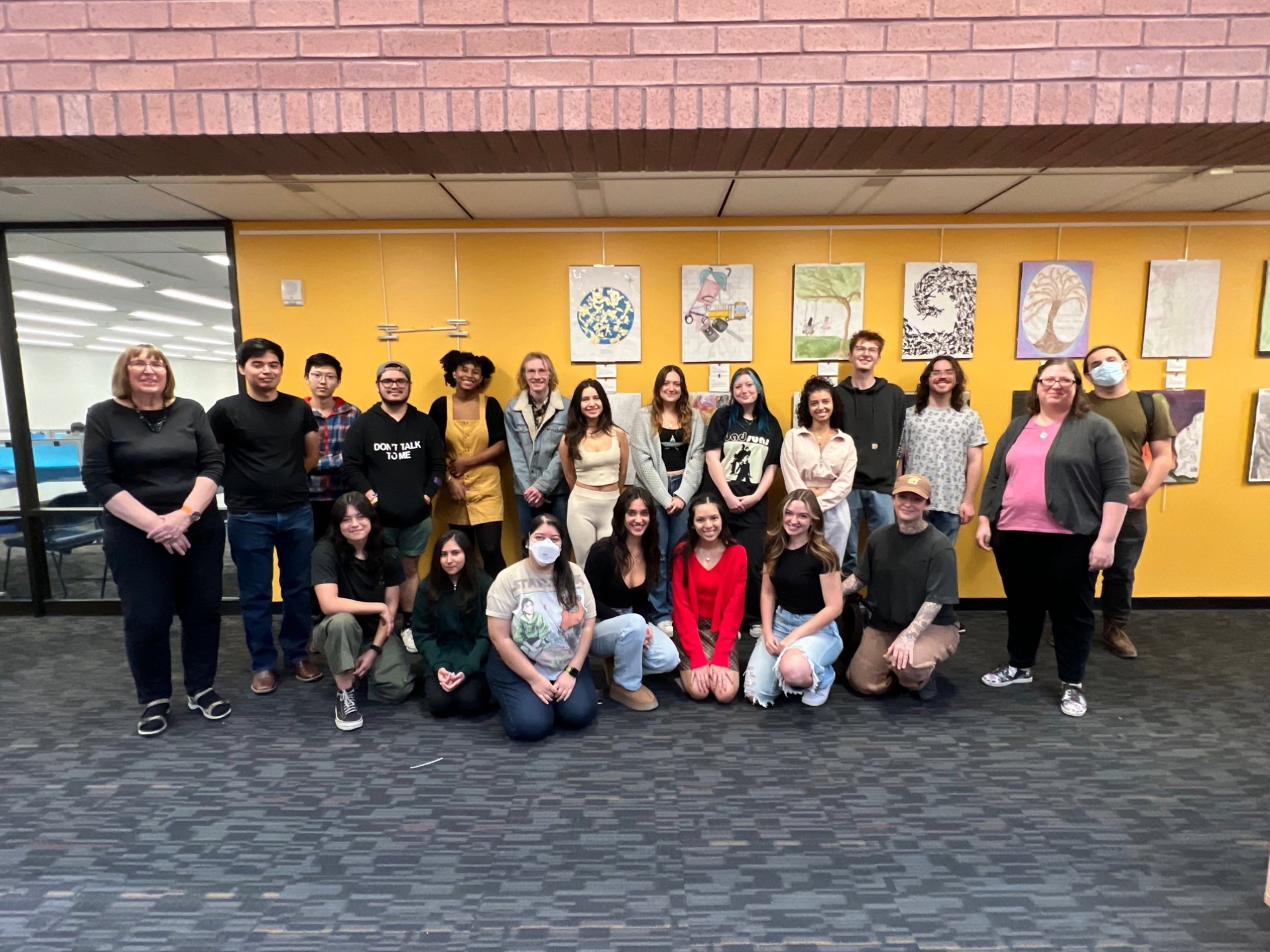ASU Library, School of Art collab celebrates 10 years with new student exhibition

A selection of artwork from the ASU Art on Paper class exhibition. Photo courtesy ASU Library
Back in 2013, when the ASU Library’s Map and Geospatial Hub decided to withdraw surplus copies of topographic maps, it allowed other units to use them for new creative endeavors. That’s when a collaboration with the Herberger Institute for Design and the Arts' School of Art began.
This year, the annual Creative Cartography student exhibition celebrates a special anniversary.
“Time and Change” is the title for a new art exhibition on display from Nov. 11–27 at Noble Library on the Tempe campus showcasing the creative problem-solving by students using cartographic materials. The exhibition includes both two-dimensional and three-dimensional original works of art on topographic and geological maps. A virtual online version of the exhibition is available under the Creative Cartography ASU Library guide.
“Each year, I have been surprised by the originality and diversity of the student responses and solutions to the map assignments,” said Ellen Meissinger, professor in the School of Art. “This year, the students were particularly innovative and intentional with their ideas and solutions for the three-dimensional part of the assignment. They incorporated a variety of working methods, from paper cutting to more sculptural and molding techniques.”
“Maps are a way of seeing pieces of our world in two dimensions whether that’s a paper map or on our phones,” said Karina Wilhelm, an archivist at the School of Human Evolution and Social Change who helped found the collaboration. “However, in 2021, one student, James Guthrie, took a geologic map and used it to construct a globe. In a way, he reversed the process of map-making by taking two dimensions and making it three-dimensional.”
Several students involved in the class this year were challenged by the process, but inspired by how it pushed them creatively.
Mya Frierson, a painting and drawing major graduating next spring, enjoyed how the challenge gave her a chance to let her creativity run free. "I loved examining why the maps were made and how each map depicted its information," Frierson said. "The way a map is designed lends to very interesting patterns or colors in order to show the viewer information about the area. I enjoyed using these patterns to create art with."
2023 Art on Paper class
Nicole Ponsart, an MFA candidate in ceramics, shared how this experience and conducting research in the Map and Geospatial Hub sparked additional exploration and direction of her graduate thesis research.
“I was introduced to the Map and Geospatial Hub at the ASU Hayden Library, where I was fortunate to encounter Matthew Toro, who runs the department. He was generous enough to dedicate some of his time to entertaining and answering my map-related questions, which ultimately helped to guide my graduate thesis research in the direction it's going now,” Ponsart said.
“Some of the things that sparked my curiosity and interest were the collections of maps and map resources on topics of speculative mapping, alternate modes of viewing maps and the software currently used to create maps and geospatial configurations. By utilizing some of the software and programs introduced to me through the geospatial hub, I'm now able to create work in a new avenue that seamlessly weaves in with my current sculptural art practice.”
After collaborating for 10 years, Meissinger and Willhelm developed a special bond around this project.
“When we started, ASU Library just gave the maps to the art class and then hosted the exhibit,” Wilhelm said. “Over the last 10 years, this collaboration has evolved to include class visits to the ASU Library’s Map and Geospatial Hub and the Makerspace. Not only do students use the maps for their artwork, but they are also introduced to library resources that many did not know about.”
As Creative Cartography comes to a close, both take joy in knowing how much of an impact the project has made on students creating artwork.
Wilhelm reflected, “The sheer variety of artwork created over the past decade shows me that there is no single way of looking at our world. Each person has their own perception of the world and that can also change over time.”
“It has been a great 10 years of art-making and repurposing maps and paper,” Meissinger said. “In the future, we want to continue collaborating while expanding and shifting our attention to new cross-disciplinary projects dealing with art and science.”
More Science and technology

ASU-led space telescope is ready to fly
The Star Planet Activity Research CubeSat, or SPARCS, a small space telescope that will monitor the flares and sunspot activity…

ASU at the heart of the state's revitalized microelectronics industry
A stronger local economy, more reliable technology, and a future where our computers and devices do the impossible: that’s the…

Breakthrough copper alloy achieves unprecedented high-temperature performance
A team of researchers from Arizona State University, the U.S. Army Research Laboratory, Lehigh University and Louisiana State…


